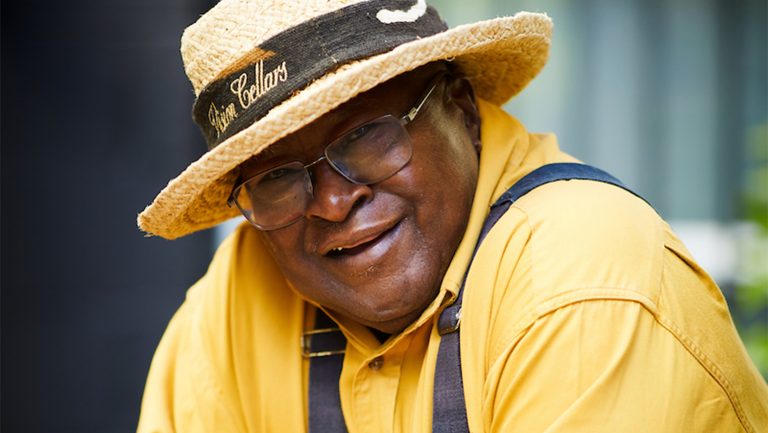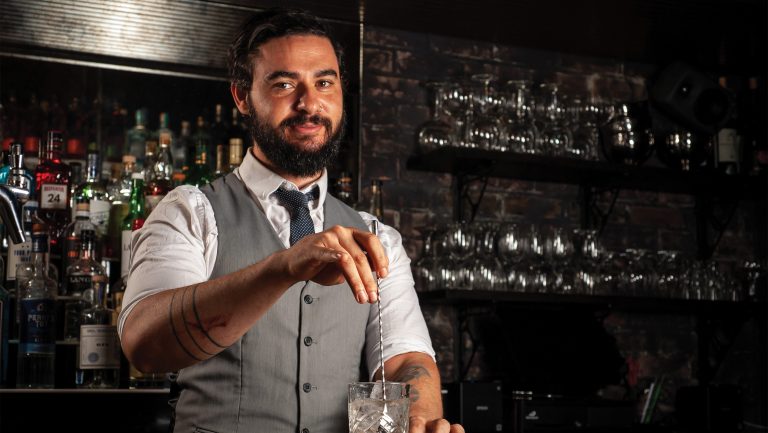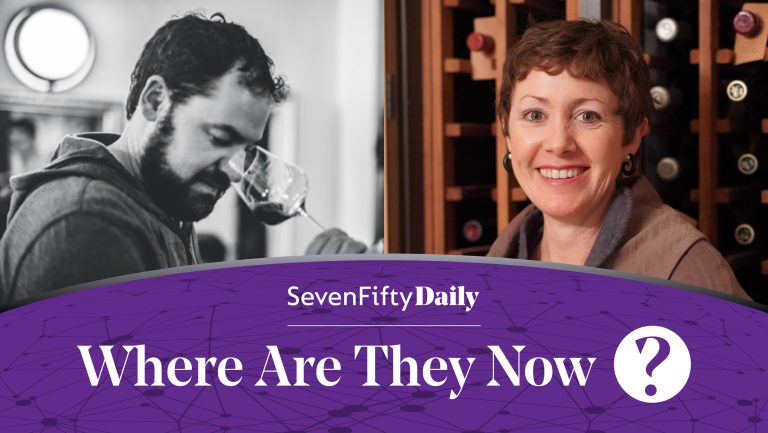Eugenia Keegan can see what’s happening to the Willamette Valley just as clearly as she can identify budbreak on a vine—and what she’s seeing is a metamorphosis. The valley is evolving from a humble, hardworking, mom-and-pop wine region into a collection of boutique producers whose names have cachet and whose exclusive bottlings are among the priciest in the world, with wineries such as Domaine Roy, Antica Terra, Archery Summit, Bergström, Domaine Serene, and others having crossed the $100-a-bottle threshold.
Keegan is the Oregon general manager for Jackson Family Wines (JFW), which is headquartered in Santa Rosa, California, and is the ninth-largest winery operation in the U.S. She also chairs the board of directors of the Oregon Wine Board (OWB), is the president of the Oregon Winegrowers Association, and serves on the Willamette Valley Wineries Association (WVWA) board and the Chemeketa Community College Wine Studies advisory committee. And coming right up, on April 5 and 6, is Willamette: The Pinot Noir Auction, an exclusive, trade-only event of which Keegan is a co-chair.
It’s difficult to think of a better connected or more powerful person in Oregon wine country to help guide this transformation of the Willamette Valley than Keegan, whom some folks in the local industry refer to as the Queen because of her benevolent, regal persona. Having run multiple operations in Napa Valley and Sonoma County, Keegan has had a hand in the maturation of two of the most prominent wine regions in the U.S., she’s worked every job in the business, and she has deep ties to the Willamette Valley.

Don’t miss the latest drinks industry news and insights. Sign up for our award-winning newsletters and get insider intel, resources, and trends delivered to your inbox every week.
“I was in Carneros when it was hip to plant Pinot Noir,” Keegan says, “and I started my own brand in the Russian River Valley when it was becoming hip for Pinot Noir. One of the things I bring to the Willamette Valley is having this 40-plus-year history, much of it in Sonoma and Napa—watching those regions emerge.”
As a GM for JFW, Keegan oversees the Willamette Valley’s Gran Moraine, Zena Crown, Penner-Ash Wine Cellars, and WillaKenzie Estate wineries, as well as Willamette Valley winemaking for Siduri and La Crema, two wineries based in Sonoma that release Willamette Valley wines—a total of 105,000 cases annually. In a state where it’s rare for a winery to release even a second label or an offshoot brand, JFW’s royal flush of luxury brands stands alone. And Keegan is holding the cards.
With Great Power . . .
Things don’t always turn out the way we imagine they will, and sometimes that’s for the better.
If you had asked Oregon’s Pinot pioneers—as they’re called locally—a few decades ago how they’d feel about the makers of Kendall-Jackson Chardonnay coming into their area and buying or launching six labels in as many years, and taking the position of a guiding force for the Willamette Valley, they might have been appalled.
Jason Lett, whose parents founded the legendary Eyrie Vineyards in McMinnville in 1968, remembers being a small child in the 1970s and hearing his father, David, getting worked up when outsiders began to treat Willamette Valley vineyard lands as investment properties. “I grew up listening to tsk-tsking over the dining-room table,” says the second-generation winemaker. “I remember the deep concern that Oregon was ‘losing its soul.’”
That concern still permeates many conversations in the Willamette Valley, where the majority of wine labels come from small family farms producing less than 5,000 cases annually.
In contrast, JFW’s website lists 13 family members who are involved in the wine business. The Jackson family owns the Stonestreet thoroughbred horse–racing empire, which encompasses thousands of acres in Kentucky and Florida, including stables, a breeding facility, and a training center. In 2017 alone, Stonestreet reports, the entity “sold 46 yearlings for $9,949,000, leading North American breeders by gross yearling sales receipts for the sixth time since 2007.” These are not the farmers next door. This is a dynasty.
JFW’s very visible arrival in Oregon in 2013—its rapid-fire purchase of the 250-acre Zena Crown vineyard in the Eola-Amity Hills, the 200-acre Gran Moraine vineyard in Yamhill-Carlton, the 350-acre Maple Grove vineyard property near Salem, and the Soléna Estate’s winery and 35-acre vineyard, which would become Gran Moraine’s home base—caused unease in the Willamette Valley community, and Keegan is aware that she occupies a delicate position in a region known for its familial culture. “Part of my work with JFW is to make sure they [the local winemaking community] are clear that that is the way we will operate in Oregon,” she says, referring to the long-held values of “neighborliness, cooperation, and collaboration” in the Willamette Valley. “It’s a combination of where we are, what we make, and who we are.”
In fact, Keegan was laying the groundwork for easing JFW’s assimilation into Willamette Valley culture before she was ever hired. In 2013, knowing that JFW was planning to expand to Oregon, Keegan and her longtime partner, David Adelsheim, invited Barbara Banke, the chairman and proprietor of JFW and the widow of company founder Jess Jackson; her daughter Katie Jackson; JFW’s chief counsel, Jeff Wesselkamper; the company president, Rick Tigner; and Carolyn Wasem, JFW’s senior vice president of government affairs, to lunch at Adelsheim Vineyard. Adelsheim, one of the Pinot pioneers, has been extremely influential in shaping the landscape, appellations, internal structure, self-governance, and quality of the Willamette Valley’s wine industry over the past five decades. “We toured, tasted, and talked,” recalls Keegan. “Our message was, ‘Welcome—but please respect the way that we do things here.’”
With great power comes great responsibility, and so far, JFW appears to be wielding its power in the valley in a responsible manner, albeit one that conveniently gets the company a seat at the most important tables. “One of the luxuries of Jackson Family Wines is that the [company’s ethical] values are very much centered on the community,” says Keegan. “They have the size to allow their GMs to spend 20 percent of their time doing community work. If you’re a small winery, you don’t have the luxury to do that.”
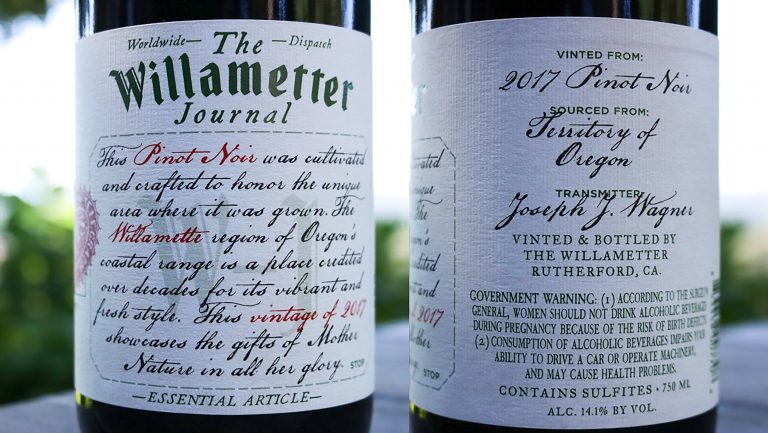
A New Era for U.S. Wine-Labeling Laws
Recent disputes find winemakers and legislators reconsidering America’s laissez-faire attitude toward veracity in wine labeling
Through her work on the WVWA and OWB boards, Keegan is now intimately involved with the crafting of currently pending wine-labeling legislation, a particularly delicate subject at the moment. And, in keeping with the soon-to-be-tightened labeling rules, Keegan asserts that even though JFW is headquartered in Santa Rosa, all its Willamette Valley winemaking happens within the appellation. In other words, the California behemoth will not be shilling “Willamette Valley Pinot Noir” that has been partly trucked across state lines or blended with another grape. Emphasizing that point, Keegan adds, “You’d be really irritated if you bought a pound of beef and found out it was 25 percent turkey.”
Jessica Endsworth, the general manager of the Angela Estate winery in the Willamette Valley, says that the local market “can be very protective.” Keegan and the JFW executive team, she says, “have been doing a lot of listening. They’ve done all the right things and have really been sensitive to the community—trying to be part of it instead of trying to push it.” Key winemaking personnel, such as Lynn and Ron Penner-Ash of Penner-Ash and Adam Lee of Siduri, have been retained by JFW, Endsworth points out, and the company’s Oregon wineries are not, in her opinion, overproducing.
The Making of a Leader
Keegan couldn’t be better poised to usher the Willamette Valley through its current period of evolution. She is fifth-generation Russian River Valley by birth. She has served in the Sutter Home tasting room in St. Helena, farmed for the Russian River Valley’s Dutton Ranch, and assisted winemaking at Joseph Swan Vineyards, also in the Russian River Valley. And those were just in her early years.

A petite, striking woman, Keegan has a quick-witted, no-nonsense way about her and a thorough command of French, Spanish, and Italian. Endsworth, who serves on the WVWA board and the Pinot Noir auction steering committee alongside Keegan, and counts her as a longtime mentor, says, “They [JFW] hired the best ambassador they possibly could have for Oregon. She may speak a few different languages, but the main one is kindness. She is easily the most level-headed person in any room. She has a sense of fairness that is unparalleled.”
Keegan has risen to the top of her field against serious odds, excelling in male-dominated environments between 1980 and 2000, a period when women weren’t exactly welcome in the wine industry. For example, she twice worked harvests in Burgundy at Domaine de la Pousse d’Or and Etienne Sauzet. How many other women were interning in Burgundy at that time? “There were none,” Keegan says, with a laugh. “They did not want us in their cellars.”
And while a few high-profile female winemakers emerged from that era, Keegan was an anomaly as an executive in the California wine industry in the ’80s and ’90s. She served as the general manager for Hop Kiln Winery, now Landmark Vineyards, in the Russian River Valley, the president and CEO of Bouchaine Vineyards in Carneros, and the president of Vine Cliff Winery in Napa Valley’s Oakville appellation.
During this period, she also served on the original steering committee for Premiere Napa Valley, America’s original trade-only auction, and chaired the 10th annual consumer-oriented Auction Napa Valley. In 1994 she launched her own Russian River Valley winery, Keegan Cellars, which specialized in Pinot Noir and Chardonnay. She eventually sold the winery’s assets, but not the brand, after moving to Oregon to launch—and later sell—a distribution firm, Tsarina Wines. Keegan describes it as “the hardest job I’ve ever had in the wine business.”
In 2010, Keegan went on a sabbatical during which she toured the great Grenache/Garnacha vineyards of southern France and northern Spain. She then went back to work in Châteauneuf-du-Pape and Roussillon for the 2010, 2011, and 2012 vintages and in 2012 purchased two small vineyards in Roussillon. After returning to the Willamette Valley, she served as acting GM of The Four Graces in 2013 and 2014 and put together an acquisition deal that enabled Foley Family Wines to purchase the winery and estate. Her vast experience in the industry has given her abundant wisdom. For young women and men starting out in the wine business, she offers this advice: “Trust your instincts and work collaboratively.”
Raising the Valley’s Profile
From the advent of JFW’s presence in Oregon, with its 2013 buying spree, a question among small producers in the Willamette Valley persisted: ”Will Jackson Family Wines swallow us all alive?”
As if in answer to this, one of the most sought-after lots this year at the Willamette Pinot Noir auction will be a Chardonnay collaboration between Shane Moore, the winemaker for JFW’s Gran Moraine winery, and the Eyrie Vineyards’ Jason Lett. The lot is labeled with the moniker Harold and Maude, after the cult-classic, seriously outré 1971 black comedy. One assumes that the Eyrie is “Maude,” but who’s to say?
Says Lett, “We were going to call it, ‘No, Kendall-Jackson is not buying the Eyrie Vineyards!’”
The 2019 auction will welcome some 120 members of the trade, accompanied by their guests, into winemakers’ homes and wineries for intimate dinners, and to the Allison Inn & Spa in Newberg for tastings and seminars. In return, buyers will raise their paddles for one-off cuvées of Pinot Noir and Chardonnay.
The end result will be that consumers will hear retailers and sommeliers using words like rare and unattainable in reference to the appellation. “That level of exclusivity is a real positive,” says Keegan. “Brands that are already very well received creating a unique five-case lot is pretty exciting to people.” The top-selling lot last year, from Antica Terra in Dundee, sold for $30,000, or $550 per bottle. JFW Oregon labels are contributing six lots to the auction this year.
On the surface, the event is a fundraiser for the WVWA, whose member dues cover basic administration costs but don’t fund high-concept marketing campaigns. At a deeper level, the auction is itself a high-concept marketing campaign, although the heavily tattooed antithesis of Bordeaux En Primeur Week, with bands performing, DJs spinning records, and no one stopping Lett and Moore from naming their lot Harold and Maude.
And despite the casual ambience, the very existence of such an event is a sign that the valley has leapfrogged over the hurdles that exist between a wine region fighting for recognition and one that has arrived. “Ten years ago, we couldn’t have pulled off this auction,” says Keegan. “The Willamette Valley didn’t have the cachet to do this, nationally or internationally. Today you have outside players coming in. You have people trying to make less wine—and more expensive wine.”
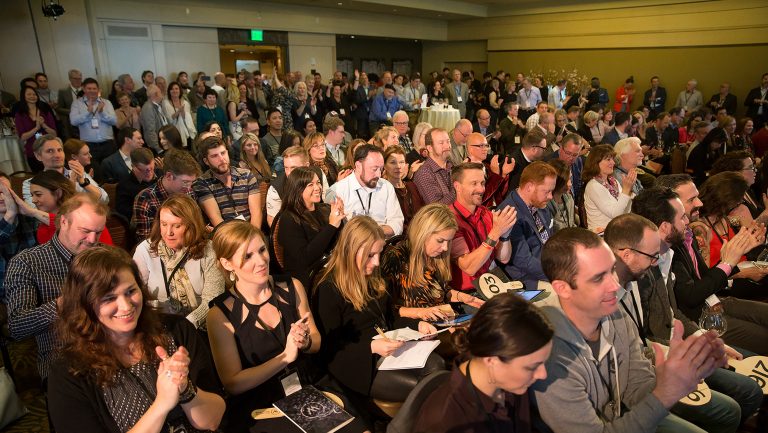
A Symbiotic Relationship
Oregon wine is growing more precious by the day. According to 2018 Nielsen data provided by the Oregon Wine Board, the state’s wine sales growth is eight times that of national table wine, and the average price per bottle of the state’s wine is double the national average. Oregon Pinot Noir sales are up 15.1 percent in a category that’s growing 2.5 percent; Oregon Chardonnay sales are up 14.6 percent in a flat category (with 0.0 percent growth). Within the lucrative $20-and-up price range, Oregon sales are growing at twice the national average.
“The Willamette Valley is positioned at the very high end of the market,” says Keegan. “It’s important that we maintain that because with our low yields and high farming costs, that’s the only business paradigm that works. You hear many people asking for an ‘entry level wine.’ Maybe that’s not the appropriate introduction to the Willamette Valley. Maybe this is an area and wine that you evolve and develop into [as a wine enthusiast].”
If JFW has given Oregon the gift of Eugenia Keegan’s benevolent guidance, then perhaps what the Willamette Valley is giving back to JFW is street cred in the wine world. Perhaps the American appellation with the dirtiest boots and least entrepreneurial winemakers is aiding one of the nation’s most profitable wine corporations as it continues to elevate its brand on the international stage.
It’s hard not to notice, for example, that the wines of JFW brand Gran Moraine might be confused with those of high-end Yamhill-Carlton winery Soter on store shelves. After all, the label designs look similar—right down to the typefaces—the price points align, and both produce an elegant brut rosé.
In summer 2017, in the U.K. trade publication The Buyer, the British wine writer Justin Keay admitted in an article that, in the past, he had either confused JFW with Jackson Estate in New Zealand or else identified it solely with Kendall-Jackson Chardonnay. This is not uncommon, says Keegan. “Most people think that the company is Kendall-Jackson, and they may know La Crema,” she says. “JFW owns another 47 or so wineries around the world. Most people have no idea about that and the quality focus.”
What brought one of America’s largest winemaking companies to Keay’s attention was a London event he attended that featured JFW’s low-key Willamette Valley winemakers and subtle, boutique Oregon wines. “Although its Oregon wineries account for less than 5 percent of Jackson Family Wines’ production and maybe a bit more of its revenue, they have become one of the veritable jewels in the crown,” Keay wrote in his article. “Not for nothing is this called ‘America’s Burgundy.’”
JFW’s Banke says that she has “long admired the wines from Oregon” and that acquiring vineyards and wineries in the area fits with JFW’s philosophy of “investing in superior vineyard sites in cool climate, coastal appellations.” The wines that JFW is producing from Gran Moraine, Zena Crown, Penner-Ash, and WillaKenzie Estate wineries, she says, “are a natural fit with our luxury portfolio and stand side by side with our wines from other regions, like Napa Valley, Sonoma County, Italy, France, Australia, and South Africa.”
In addition to its expansion into Oregon, JFW has recently acquired high-end labels in California, like Brewer-Clifton in the Sta. Rita Hills and Copain in Healdsburg. It has launched swanky international ventures like Hickinbotham Clarendon Vineyard in Australia’s McLaren Vale. In 2015 the Jacksons launched the luxury Chardonnay brand Capensis, a collaboration with the Beck family, the owners of Graham Beck winery in South Africa’s Robertson Valley and good friends of the Jacksons from the Kentucky horse-racing scene. (JFW also acts as the broker for the Beck family’s Angela Estate in the Willamette Valley.)
But like Keay, some observers feel that it’s the Willamette Valley that’s pulling the world’s perception of JFW up to the top tier of quality.
“Over the years,” says Banke, “Willamette Valley has built an international reputation for exceptional wines, particularly Pinot Noir and Chardonnay, which was what attracted me to the region initially. Our hope is to continue to uphold and build that reputation and bring these special wines to the global marketplace.”
Erica Landon, a past president of the WVWA board and a co-owner and general manager of Walter Scott Wines in Eola-Amity Hills, believes that it was “paramount” that JFW established Keegan as its Oregon lead. “Eugenia,” she says, “is uniquely qualified to bridge the relationship between Oregon and California. She has history and relationships in both communities and knows how they both work. She understands intimately the history of the Willamette Valley, its long record of collaboration, and where our industry is headed. It was a brilliant choice, and Eugenia has done a beautiful job of integrating Jackson Family Wines into our tight-knit community.”

Dispatch
Sign up for our award-winning newsletter
Don’t miss the latest drinks industry news and insights—delivered to your inbox every week.
Katherine Cole is the author of four books on wine, including Rosé All Day. She is also the executive producer and host of The Four Top, a James Beard Award–winning food-and-beverage podcast on NPR One. She is currently working on a fifth book, Sparkling Wine Anytime (Abrams), to be published in Fall 2020.



